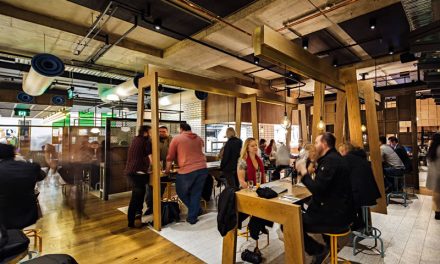Peter Georgiev, Archicentre Australia director
Timber – old and new – has some Australian stories to tell. As a most resilient material it has naturally provided early settlers and our modern building industry with versions of utility. East Gippsland’s historic Ironbark railway bridges still stand – bearing testimony to simple durability. On the housing front, “temporary” weatherboard-clad, timber-framed worker’s cottages still stand in our inner cities and country towns.
As a nation, we are old enough to bear witness to houses that have come out of our vast forests – many of which are now coming under challenge due to perceived “impermanence” or inadequacy of thermal performance demanded by current building codes.
Due to traditional preconceptions that, because wood burns, it is inherently unsuitable for safe use in all but the most basic of buildings, building regulators have long eliminated timber as a credible material for many commercial, institutional and multi-storey buildings. This is changing – but the pace and effort is slow. This sets a scene that most architects and builders accept without much challenge.
Densification
While governments would have us believe that the creation of new suburbs on the fringes of Australian cities will provide affordable options for many people seeking to make the great Australian dream of home ownership a reality, they really don’t get it when it comes to understanding that design quality is the real issue – and not in “new” suburbs, but rather in the suburbs that already exist. European-type densification is a readily available and successful model for design consideration. Sadly, the impetus for this does not appear to be coming any time soon from any of the three tiers of governments or from the development industry.
So who might show some leadership on this front? Some architects are planting seeds and green shoots are emerging – on matters that seek to address complexities of community, existing building stock, sensible design and finance. This work is challenging – and cuts across the inertia promulgated by the partnership of land developers and volume builders who keep pushing for new suburbs and associated inadequate infrastructure.
Established suburbs and towns
Australia has largely been based on a timber-centric residential building industry. Much of our timber-based housing has been readily provided out of a solid stock of forests – old growth and renewable – and until recently this embedded legacy has withstood the test of time.
Where architects may give “brownie points” to the embedded energy that old timber-framed buildings exhibit when consideration is given to renovation or re-use – especially housing – this does not appear to be a view that resonates with the large volume builder-based approach to housing – their mantra being “detonate and rebuild”.
While clearly providing benefit to this substantial sector of the building industry, the question needs to asked – how clever is it in an era where we are focusing on sustainability?
Design solutions can and do exist to make established timber-framed buildings good enough for the future. These are not only pre-war buildings – counted among this group are the brick veneer houses (floor/wall/roof frames) of post-war Australia up to the 1990s.
This architecturally-based design consideration can at once take advantage of embedded energy that old timber-framed buildings provide as well as challenging the “McMansion dream home” approach to housing development afflicting many established suburbs and towns.
Future initiatives
To the extent that architects have a say on matters that point to positive future directions, we can take heart that the development of radially sawn timbers is providing the timber and building industry with leads for more efficiency and sustainability. One mill at Yarram is a start, but surely more is required.
Larger scale operators should take encouragement out of this initiative on a national basis. Re-use of timbers, too, should be encouraged and supported by governments and regulators. Matters that give pause for thought include maintaining existing timber-based housing stock and enhancing it for the next generation rather than detonating it, and altering entrenched building regulations that prefer concrete and steel where timber could provide a viable alternative.









